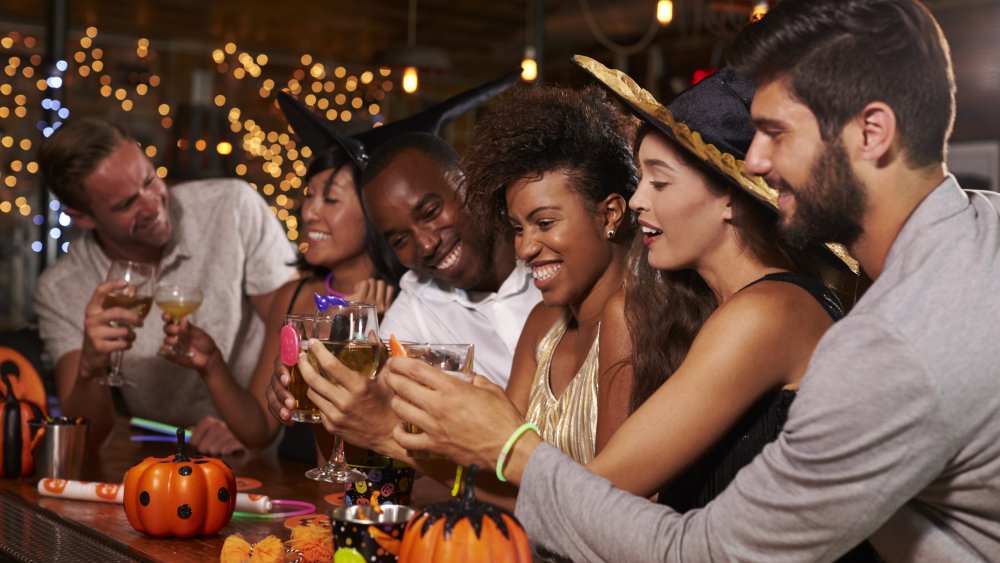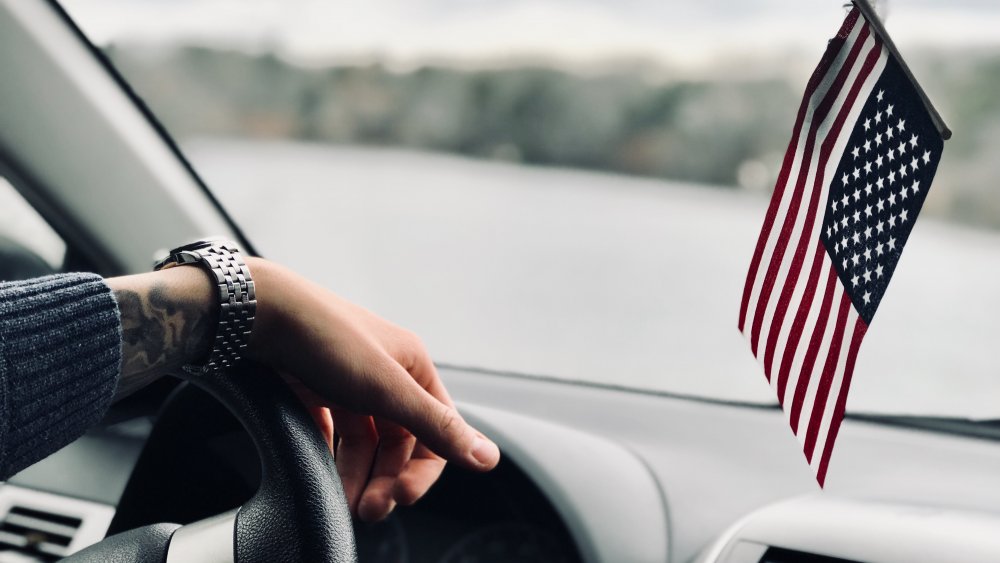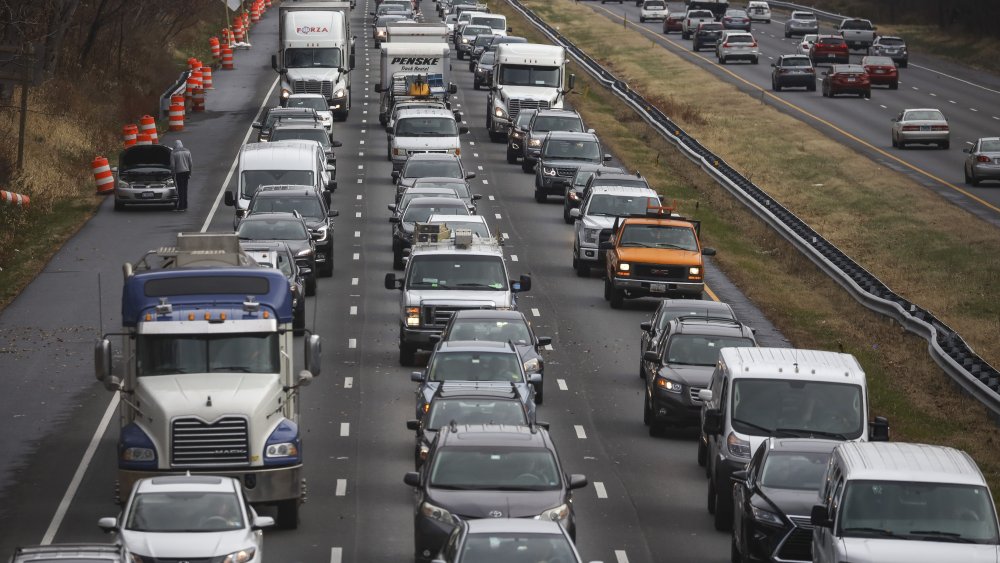The Most Dangerous Holidays In The US
When you consider risks we all must take during the holidays, a few come to mind: Sitting in nightmare traffic, blowing your budget on gifts, ill-advised arguments with relatives, and consuming enough tryptophan-laden turkey that you fall into a food coma.
However annoying or stressful these celebrations can be, nothing compares to the risk of getting behind the wheel on major holidays like Thanksgiving, New Year's Eve, and Independence Day. As reported by USA Today, AAA estimates that about 95 million Americans will hit the road between the end of December and New Year's on road trips to see family and friends during the busy holiday season. During this same period, 27,900 people will be seriously injured in car accidents. Of those holiday accidents, an average of 250 can be fatal.
The National Safety Council (NSC) released reports in 2013 that tracked the number of traffic accidents that happen around America's top travel holidays — with Christmas, New Year's, Thanksgiving, Memorial Day, Labor Day, and the Fourth of July as the top contenders. So, which is the deadliest holiday in the United States?
Independence Day is by far the deadliest holiday
Turns out, along with boasting the highest hot dog consumption of the year, Independence Day is also the most dangerous holiday in the United States.
The hazards of the Fourth of July have had a while to seep into America, too. The first-ever celebration of Independence Day happened on July 4, 1777, back when 13 rockets were set off in Philadelphia in honor of the colonies, per History. And while setting off explosives for entertainment with absolutely no experience comes with its own dangers — the U.S. Consumer Product Safety Commission reported 12 fireworks-related deaths in 2019 — sparklers are far from the riskiest behavior on July 4th.
The real culprit is excessive drinking and driving. The NSC reported that about 540 people die on the road during the Fourth of July travel period, which spans about four days. In addition to deaths, there were 58,000 serious injuries to motorists traveling to and from their fireworks displays and barbecues. And yes, most of those people were boozin'. USA Today reported that "between 2007 and 2011, alcohol accounted for 61 traffic fatalities per day over the Independence Day travel period, more than any other major holiday."
Not far behind was Memorial Day weekend, which sees 407 traffic-related fatalities a year. Next up was Thanksgiving with 436 deaths and 46,600 nonfatal injuries, Labor Day with 394 deaths and 42,000 nonfatal injuries, and finally, New Year's Day saw 156 deaths. New Year's seems to be predictably the drunkest of the holidays: Between 2007 and 2011, alcohol accounted for 42% of traffic deaths at the turn of the year.
Your wallet impacts how dangerous holidays are
Naturally, the number of fatalities on American holidays is affected by how many people actually get on the road. Bad weather can prevent traveling and so can your wallet. Ken Kolosh, manager of statistics at the NSC, claims that the economy can have a huge impact on whether people travel off to far-flung places during the major holidays. "Recessions actually tend to save lives on the road. We've reached some really historic lows during the last recession," Kolosh explained to USA Today.
At the height of the recession in 2009, a low average of 250 people died on the road around Christmas. Compare that to the period between 2003 and 2008 when that number was 370 deaths. It turns out, being too broke to visit your folks or party at a cookout at least has some advantages. In 2020, with unemployment rates as high as 14.7% at one point, it's less likely we will see as many holiday-related traffic fatalities, in what could be the sole silver lining of one of the worst years in history.
Still, that doesn't mean we should throw caution to the wind during holidays. Heavy travel, increased alcohol use, and speeding are still major risks compared to non-holidays.
Conspicuously missing from this list of dangerous holidays? Halloween. But, apart from the mythic threat of drug-laced goodies, trick-or-treating actually can be dangerous. According to the Washington Post, the spooky holiday puts young pedestrians at risk, with three times the amount of pedestrian fatalities than any other day of the year.


